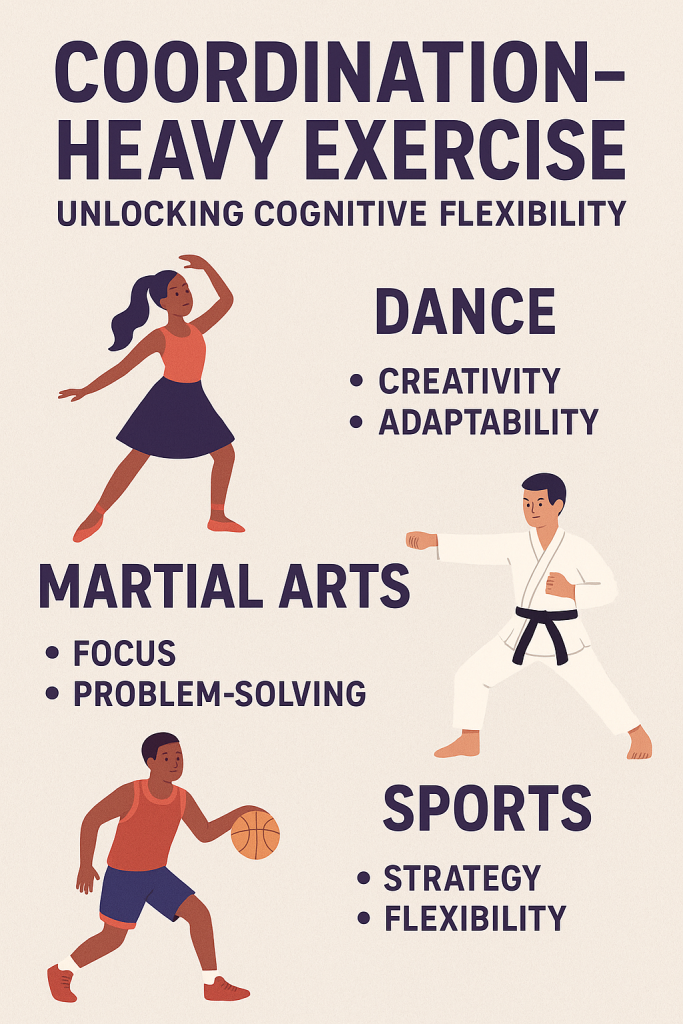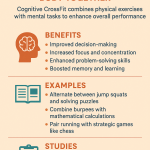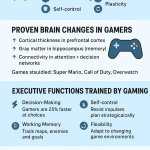Why Your Brain Needs Coordination, Not Just Cardio
When most people think of exercise, they picture running on a treadmill, lifting weights, or hitting the gym to burn calories and stay fit. While these activities are great for physical health, they barely scratch the surface of what movement can do for the brain. There’s a special category of activity that not only strengthens muscles but also rewires neural pathways: coordination-heavy exercise.
Coordination-heavy exercise — think dance, martial arts, or team sports — requires you to synchronize multiple movements, respond to unpredictable environments, and adapt on the fly. These activities don’t just build athletic ability; they cultivate cognitive flexibility — the brain’s ability to shift between tasks, think creatively, and solve problems in real time.
In a world increasingly shaped by artificial intelligence, adaptability and creative problem-solving are the ultimate human skills. And the best part? You can literally train them through movement.
What Is Cognitive Flexibility and Why Does It Matter?
The Neuroscience of Flexible Thinking
Cognitive flexibility is the mental ability to switch perspectives, adapt strategies, and juggle different concepts at once. It’s part of what neuroscientists call executive function, which includes skills like working memory, decision-making, and self-control.
For example:
- A business leader shifting strategies mid-presentation when data changes.
- A student tackling a math problem one way, realizing it doesn’t work, and quickly trying another approach.
- A gamer adapting to a new opponent’s strategy in real time.
This flexibility is powered by the prefrontal cortex, often called the “CEO of the brain.” The more we challenge it, the sharper it becomes.
Why Cognitive Flexibility Is the Human Advantage Over AI
Artificial intelligence is powerful at analyzing data, recognizing patterns, and performing repetitive tasks faster than we ever could. But humans have something AI lacks: adaptability and creativity. We can improvise, innovate, and pivot when conditions suddenly change.
Research has shown that people with higher cognitive flexibility perform better at problem-solving, are more resilient under stress, and even report greater life satisfaction. In short: flexibility isn’t just a mental skill; it’s a competitive edge.
And here’s the exciting part — you don’t have to be born with it. You can train it, just like a muscle, through coordination-heavy movement.
Coordination-Heavy Exercise and the Brain
Beyond Cardio — Why Coordination Is Special
We know exercise in general boosts brain health. Cardio increases blood flow and stimulates the release of BDNF (brain-derived neurotrophic factor), a protein that promotes the growth of new neurons. Strength training sharpens focus and builds discipline.
But coordination-heavy activities go further. They require complex motor control: balance, timing, rhythm, spatial awareness, and often multitasking. This forces the brain to build stronger neural connections between areas responsible for movement, planning, and memory.
In short: cardio makes the brain healthier, but coordination makes the brain smarter.
The Brain-on-Movement Effect
When you learn a dance routine, practice martial arts, or play a fast-paced sport, brain imaging studies show activation across multiple regions:
- Prefrontal cortex → decision-making and focus.
- Cerebellum → motor control and rhythm.
- Hippocampus → memory and spatial navigation.
By engaging these regions together, coordination-heavy exercise strengthens the cross-talk between them. That’s neuroplasticity — the brain’s ability to rewire itself — in action.
Dance — The Rhythm of Cognitive Flexibility
How Dance Trains the Brain
Dance is more than moving to music; it’s a full-brain workout. When you dance, you’re:
- Memorizing choreography (working memory).
- Syncing to rhythm (timing and auditory processing).
- Navigating space (spatial awareness).
- Expressing emotion (empathy and creativity).
It’s multitasking at its most elegant form. Studies show that dance training improves not only coordination but also mental flexibility, creativity, and even social cognition.
Research on Dance and Brain Health
- A landmark study published in the New England Journal of Medicine found that seniors who danced regularly reduced their risk of dementia by 76% — the highest of any physical activity studied.
- Another study found that just 10 weeks of dance improved cognitive performance in older adults, particularly in memory and task-switching.
Styles That Challenge the Brain Most
- Latin dances (salsa, tango, bachata): Complex footwork and partner coordination demand high adaptability.
- Hip-hop: Encourages improvisation and freestyle creativity.
- Ballet: Enhances discipline, memory, and mind-body awareness.
Even beginners benefit: simply learning new choreography challenges the brain in ways few other activities can.
Martial Arts — Discipline Meets Neuroplasticity
Mind-Body Integration
Martial arts are often described as moving meditations. Whether it’s karate, taekwondo, judo, or Brazilian jiu-jitsu, practitioners must combine focus, reflexes, and strategy.
Key benefits for the brain:
- Forms/kata practice → strengthens memory and sequencing.
- Sparring → sharpens adaptability and situational awareness.
- Breathing and mindfulness → enhance emotional regulation.
The Neuroscience of Combat Sports
Research backs up the brain-boosting effects:
- A study on taekwondo practitioners found improvements in executive control and cognitive flexibility compared to non-athletes.
- Martial arts that emphasize grappling (like judo or BJJ) build adaptability since every opponent is unpredictable.
- Meditation practices within martial arts help reduce stress and improve focus.
The result? Martial artists develop both discipline and flexibility — a combination that enhances problem-solving in daily life.
Sports — Teamwork, Strategy, and Fluid Thinking
Fast-Paced Games and Flexible Brains
Sports like soccer, basketball, and tennis demand rapid adaptation. A player must read the game, anticipate opponents, and change tactics instantly. This constant adjustment trains the brain to handle uncertainty and complexity.
A 2018 study in Frontiers in Psychology showed that athletes in high-coordination sports had stronger white matter integrity — meaning faster communication between brain regions.
Strategic Sports and Decision-Making
Even non-contact sports sharpen the brain:
- Table tennis: Lightning-fast visual tracking and reaction times.
- Badminton: Requires constant repositioning and anticipation.
- Volleyball: Demands instant communication and strategy adjustment.
These sports aren’t just about physical skill — they’re cognitive bootcamps.
Scientific Evidence Linking Coordination Exercise to Brain Health
Studies on Children
- Kids who engage in coordination-heavy sports show better academic performance, especially in math and reading.
- Dance programs have been shown to improve focus and reduce ADHD symptoms.
Studies on Adults
- Martial arts training in middle-aged adults improves executive function and attention.
- Recreational athletes demonstrate superior multitasking and cognitive flexibility compared to sedentary peers.
Studies on Seniors
- Seniors who take up dance reduce dementia risk significantly.
- Coordination-heavy exercise improves both balance and cognitive sharpness in older adults, offering double protection against aging.
How to Train Cognitive Flexibility with Coordination-Heavy Exercise
Practical Framework
- Beginner: Try basic dance classes, shadowboxing, juggling, or beginner sports.
- Intermediate: Join a martial arts dojo, play recreational soccer or basketball, or learn complex dance routines.
- Advanced: Compete in sports, master advanced martial arts forms, or choreograph dances.
How Often and How Long
- Research suggests 2–3 sessions per week is optimal.
- Even 20–30 minutes of practice has measurable benefits.
- Consistency > intensity: regular small doses work better than occasional long sessions.
Combine with Other Brain-Boosting Practices
- Meditation → pairs well with martial arts and dance.
- Language learning → adds a cognitive layer to memory and adaptability.
- Music practice → similar overlap in rhythm, timing, and creativity.
Coordination Training and Productivity in the AI Era
Exercise Before Deep Work
Ever notice how you think more clearly after moving? Studies show that just 20 minutes of coordination-heavy exercise can enhance attention and task-switching for hours afterward.
Using dance, martial arts drills, or sports warmups before work can prime your brain for problem-solving and creativity.
Why Companies Should Encourage Neuro-Fitness
Forward-thinking organizations already know wellness programs boost productivity. Imagine if workplaces offered martial arts classes, dance sessions, or recreational sports teams. Beyond fitness, they’d be building a workforce with stronger adaptability, collaboration, and creative thinking skills — the very traits AI can’t replicate.
Conclusion: Move Your Body, Free Your Mind
Coordination-heavy exercise isn’t just about burning calories or building strength — it’s about training the brain to adapt, shift, and thrive. Dance challenges your memory and creativity, martial arts sharpen your focus and adaptability, and sports cultivate strategy and teamwork.
In a world where AI takes over routine tasks, our greatest asset is cognitive flexibility — the ability to think differently, improvise, and stay resilient in uncertainty. The most exciting part? You don’t need fancy technology or endless hours of study to build it. You can do it on the dance floor, in the dojo, or on the field.
So next time you’re deciding between the treadmill and trying something new, remember: the treadmill works your body, but coordination-heavy exercise works your future-proof brain.
What Japanese Brain-Scan Research Reveals About Gymnast Neuroplasticity
An illuminating study reported by The Asahi Shimbun reinforces this deep dive into neuroplastic changes in Olympic-level gymnasts—which aligns perfectly with our core topic.
Researchers led by Hidefumi Waki at Juntendo University conducted MRI scans on 10 male gymnasts with world-class credentials and compared them to a control group of non-athlete males. Strikingly, certain regions of the gymnasts’ cortex were about 10% larger—notably the precentral gyrus (motor function) and the inferior parietal lobule (involved in spatial perception and sensory integration) 朝日新聞.
Furthermore, the team discovered that athletes with higher average competition scores tended to have larger volumes in the inferior parietal lobule, suggesting that long-term training reshapes brain regions tied to spatial and sensory processing 朝日新聞. Interestingly, no regions were found to be smaller, underscoring that these adaptations appear to be built—not traded off.
Waki notes that gymnasts’ ability to make split-second body adjustments—even before initiating movement—is central to their expertise 朝日新聞. These insights dovetail with our discussion on prefrontal recalibration, motor-visual integration, and the emergence of autopilot-like performance in elite athletes.
Shaolin monks brain scan research not only highlights incredible focus and resilience but also connects deeply to modern health and wellness practices. Their disciplined lifestyle—balancing meditation, movement, and mindfulness—shows us how ancient wisdom aligns with today’s science-backed approaches to stress management, emotional regulation, and overall well-being.



